As soon as the war ended, discussions began on how to honour Newfoundland and Labrador's war dead. While many communities erected memorials for their own lost men, it was felt that a national war memorial was needed. The Patriotic Association and the Great War Veterans' Association worked together to find a way to "give expression to its gratitude and respect for those who during the Great War served King and Empire". In 1920, these associations jointly recommended the building of both a national war monument and a school as memorials.
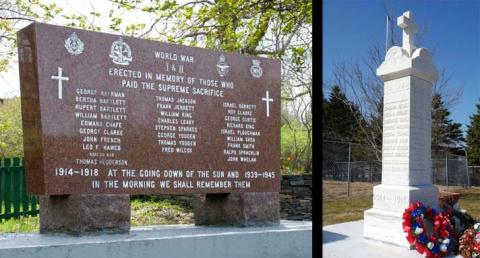
War Memorials Brigus (left) Whitbourne (right)
The Rooms - photographer Angel deYoung
To help fund the monument, large numbers of Newfoundlanders and Labradorians bought dollar "shares" in the Newfoundland War Memorial Company Unlimited. On July 1, 1924, the National War Memorial was unveiled in downtown St. John's by Field-Marshal Earl Haig. The ceremony was witnessed by tens of thousands of spectators.
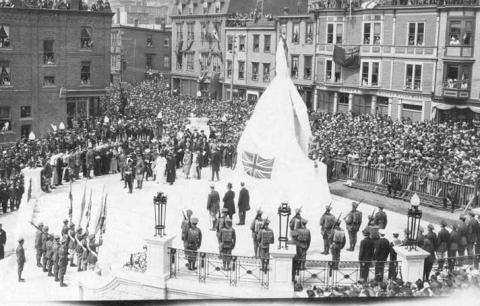
Unveiling of National War Memorial, St. John's, 1 July 1924
The Rooms Provincial Archives A11-177
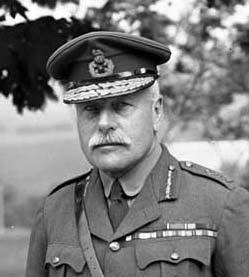
Field-Marshal Earl Haig
The Rooms Provincial Archives E-2-16
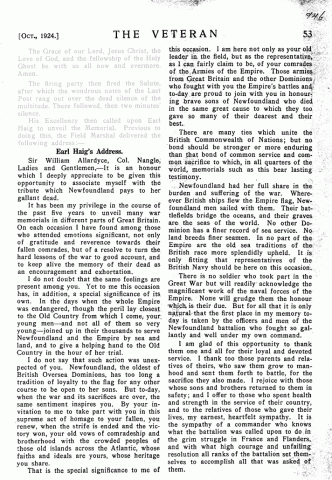
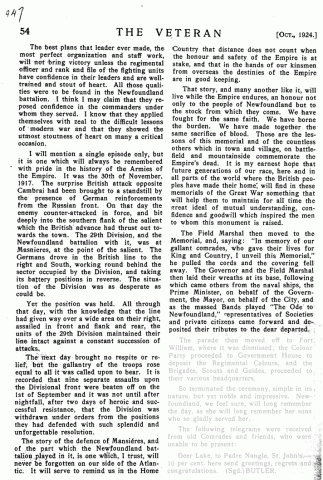
The Veteran, October 1924
The Rooms Provincial Archives
In 1925, Memorial University College was opened in memory of all Newfoundlanders and Labradorians who served in the First World War. This college offered the first two years of university courses. The College became Memorial University of Newfoundland in 1949.
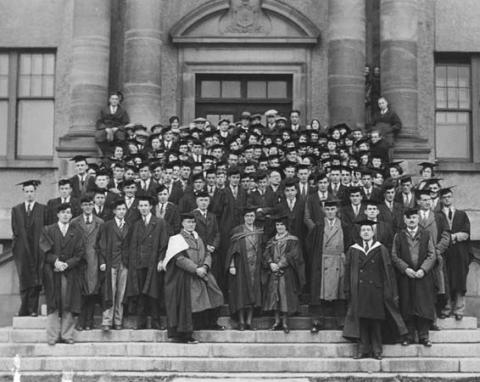
Memorial University College
Private Collection
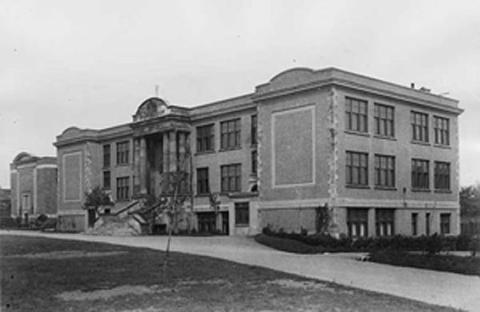
Memorial University College
Memorial University of Newfoundland Archives and Special Collections Division (Coll. 137, 2.04.001)
In addition to memorials at home, it was decided to erect five bronze caribou memorials overseas to mark places of historical significance for the Royal Newfoundland Regiment. Father Thomas Nangle, who had been the Catholic Chaplain for the Regiment from 1916 until the end of the war, coordinated the work on these memorials. It was also Father Nangle's vision to create a special memorial park at Beaumont-Hamel. He approached Sir William Coaker with the idea, who later obtained $10 000 to purchase the land for the park. Dutch landscape architect, Rudolph Cochius (who also designed Bowring Park), worked on the park design. In 1925, Newfoundland Memorial Park was officially opened by Field-Marshal Earl Haig.
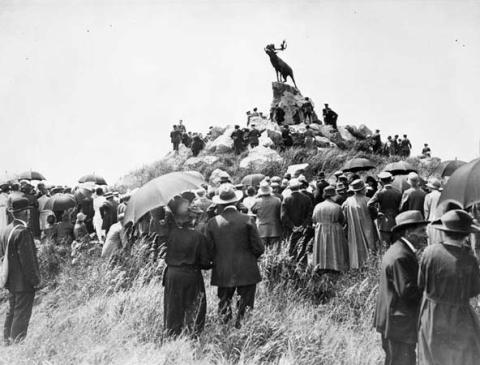
Opening of Newfoundland Memorial Park, Beaumont-Hamel, France, 7 June 1925
The Rooms Provincial Archives NA3106
Newfoundland and Labrador's role in the Great War was also commemorated on postage stamps. In 1919, the Newfoundland Postmaster General issued a set of twelve stamps depicting a caribou head. Four of these were in honour of the Royal Naval Reserve, and the others marked places where the Royal Newfoundland Regiment had fought with distinction.
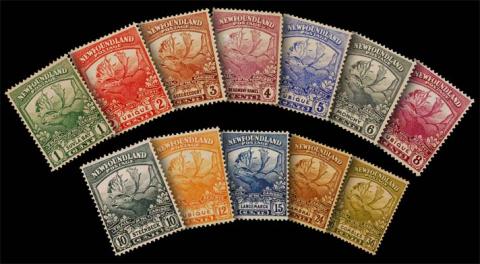
Twelve Stamp Issue to Honour Those Who Fought
The Rooms Provincial Museum
On January 2, 1919 a special set of twelve stamps called the "Trail of the Caribou" was issued in honour of Newfoundland and Labrador's role in the First World War. Each of the stamps featured the caribou head found on the Royal Newfoundland Regiment's emblem. Eight of the stamps marked specific engagements of the Regiment. The other four honoured the role of Newfoundlanders and Labradorians in the Royal Navy and bore the word "Ubique", which means "everywhere."